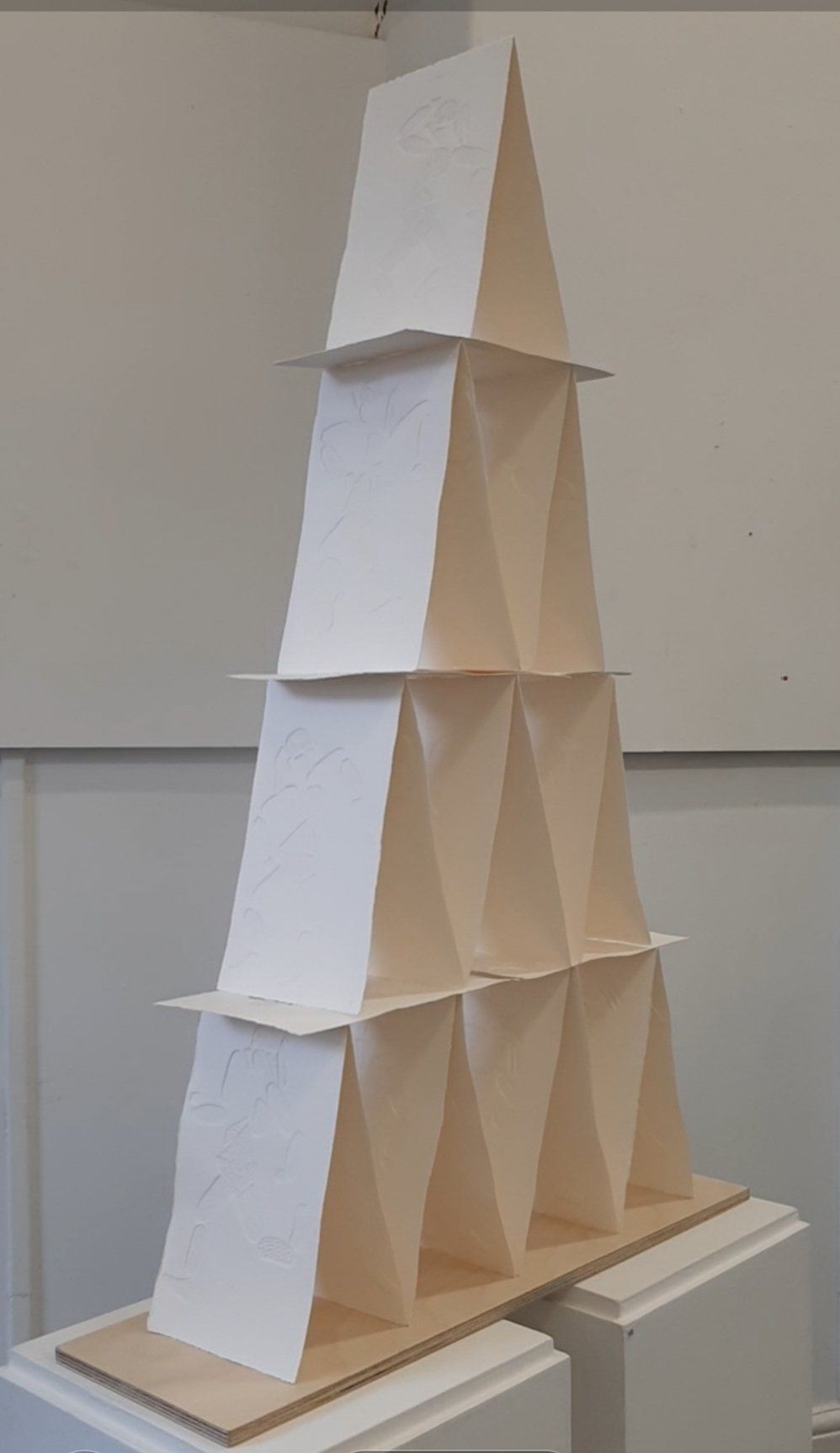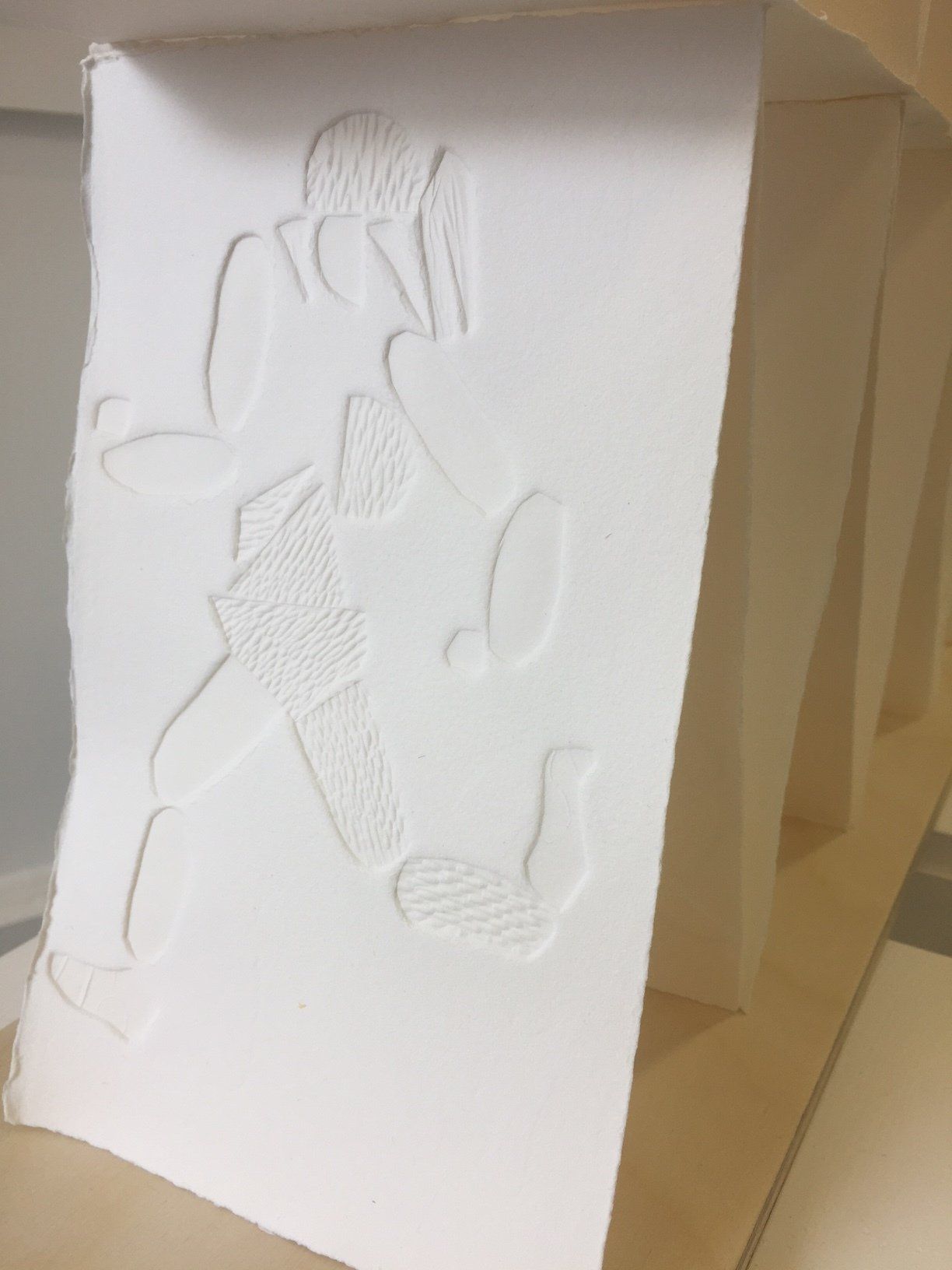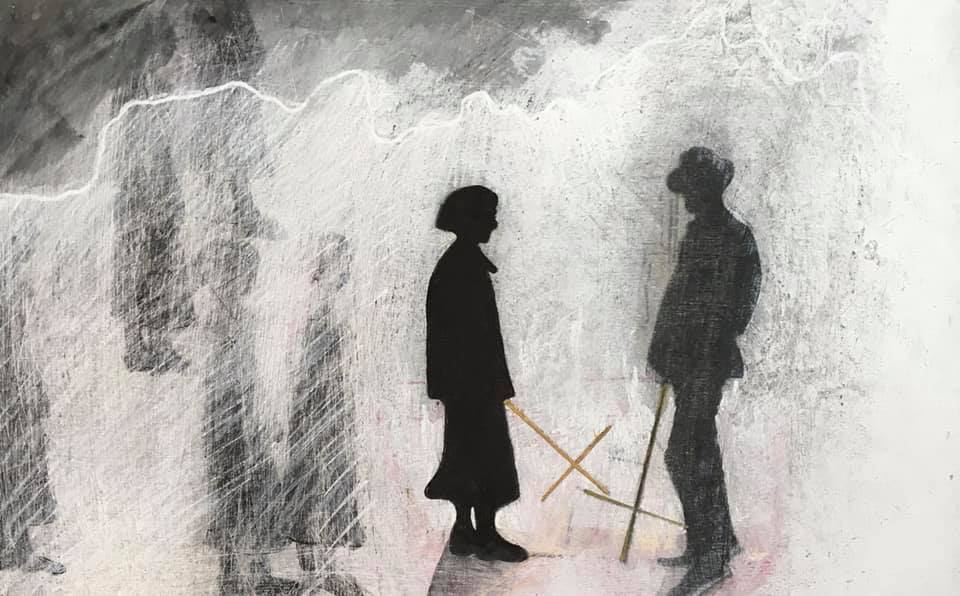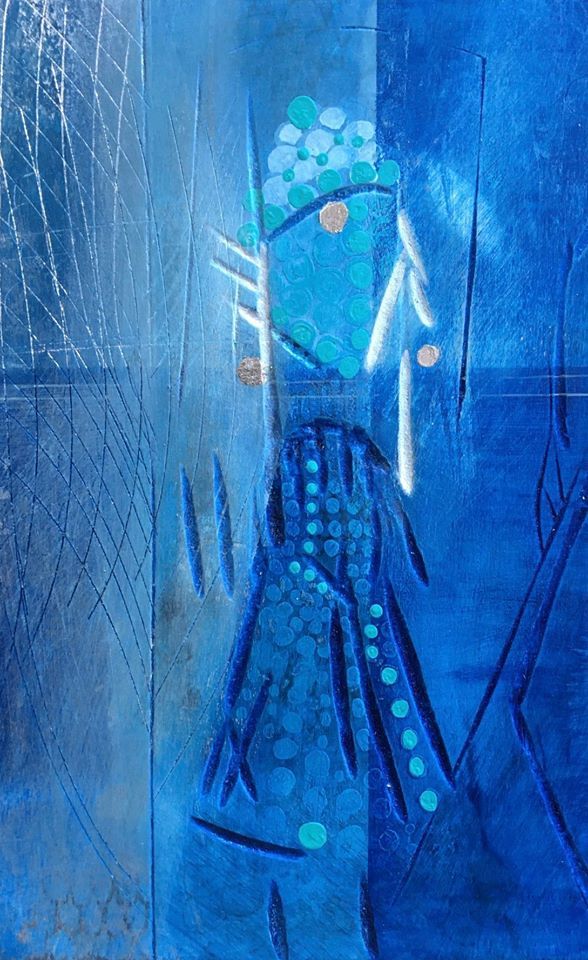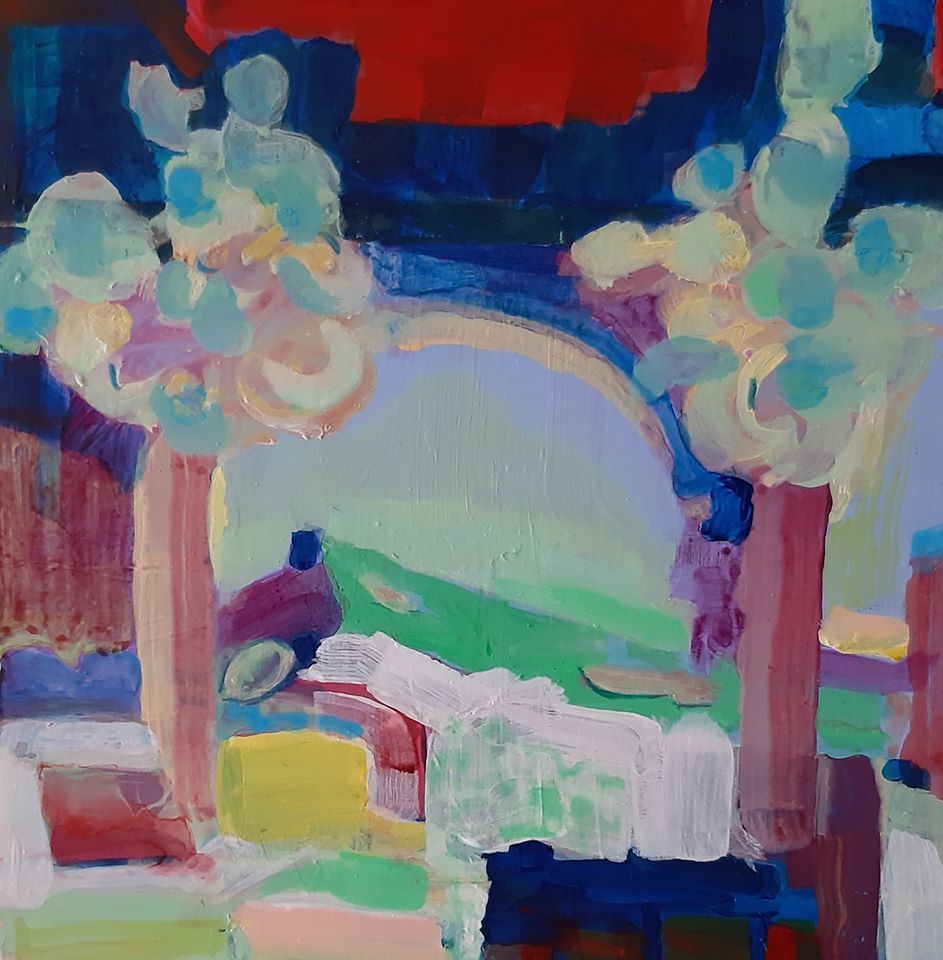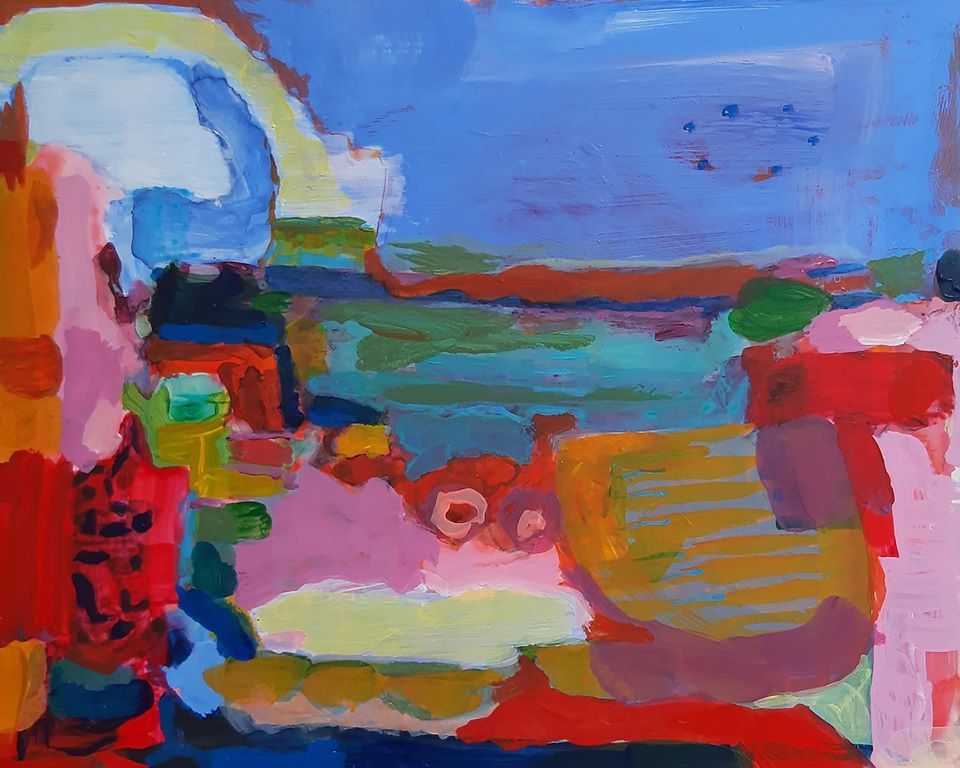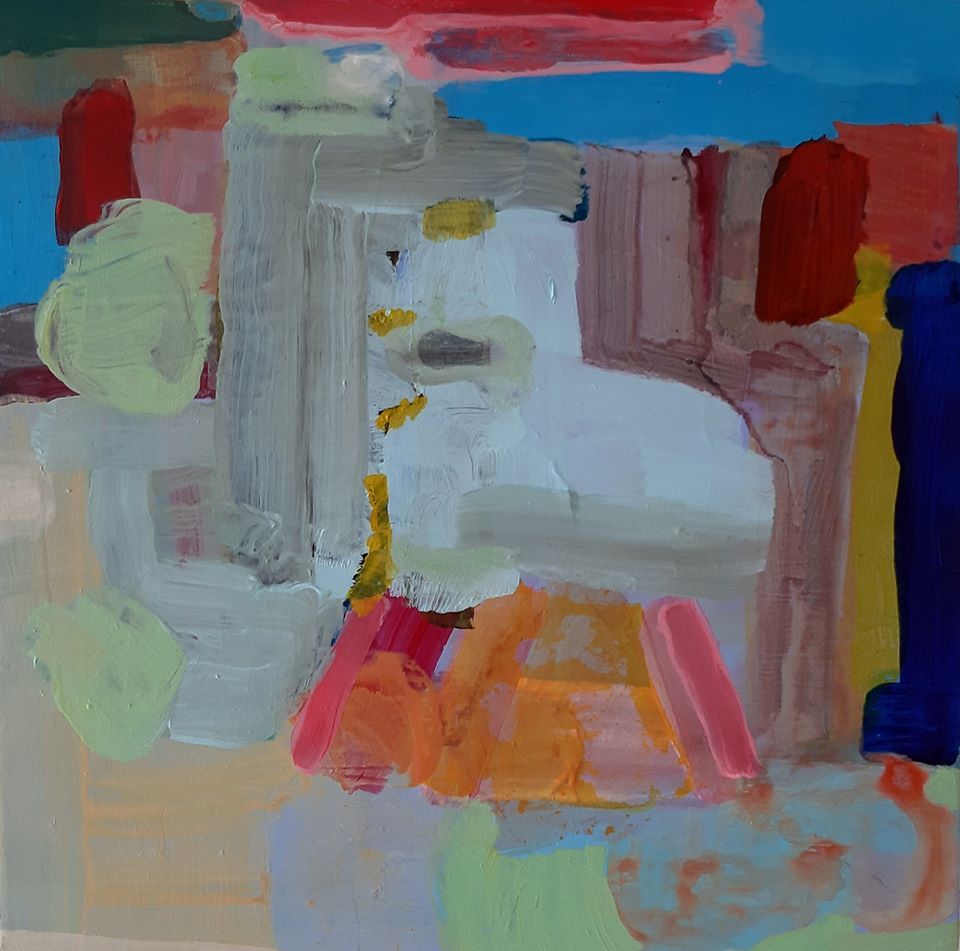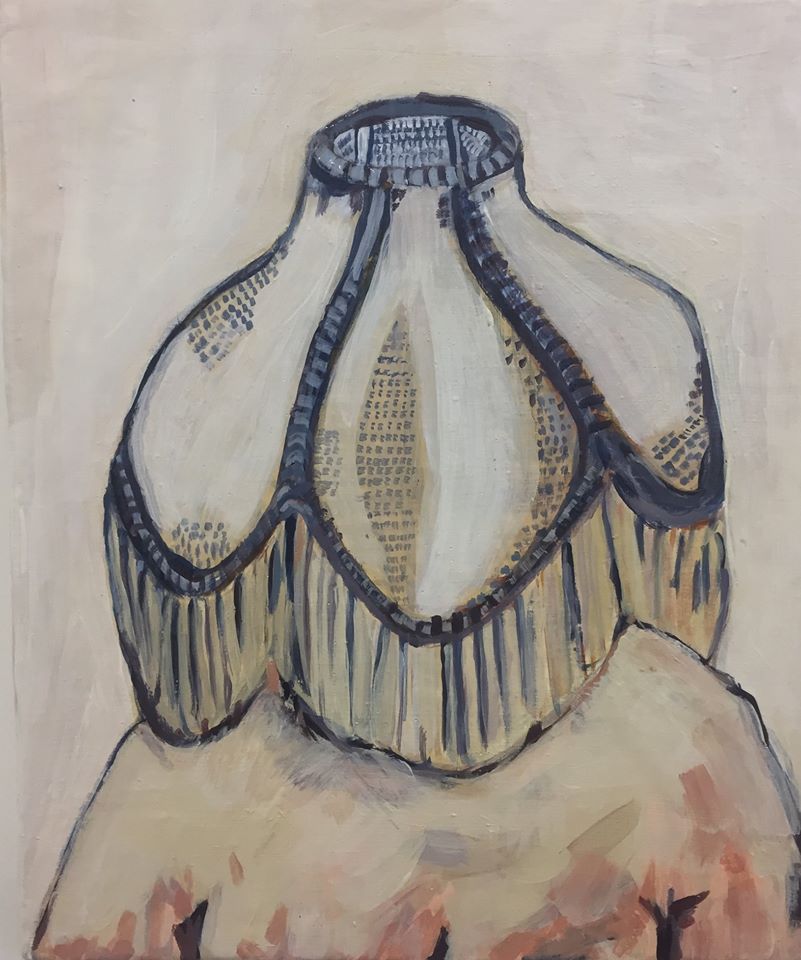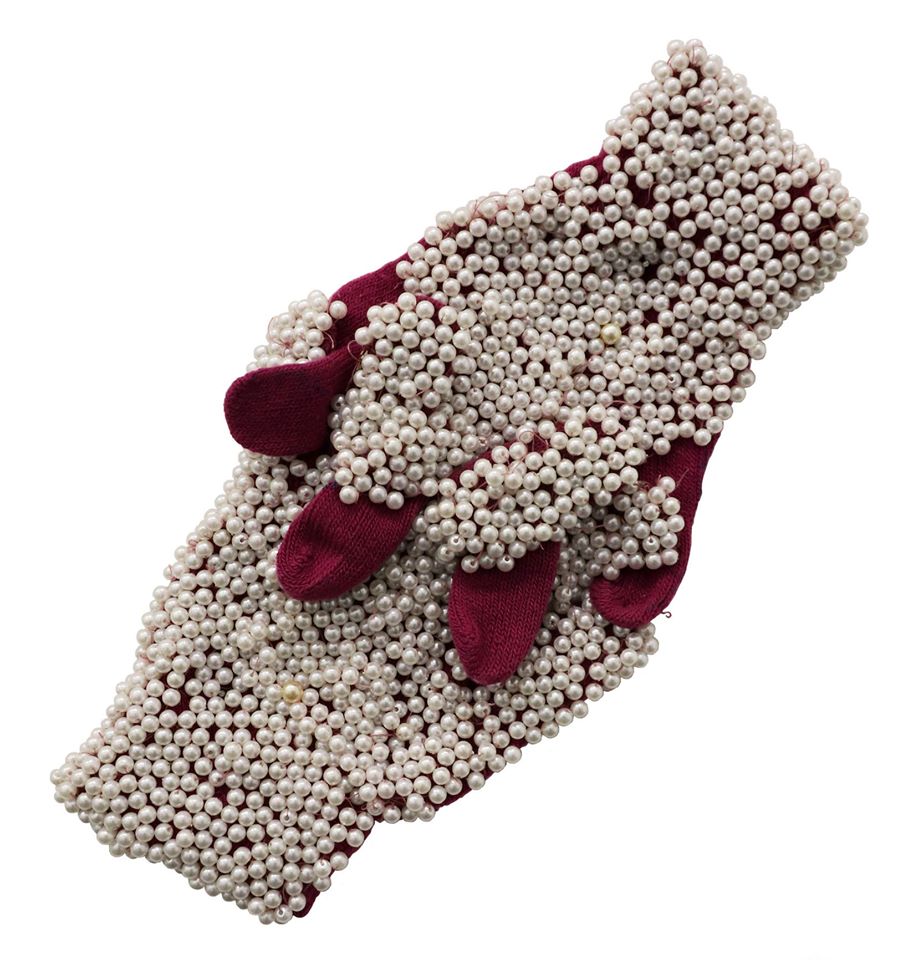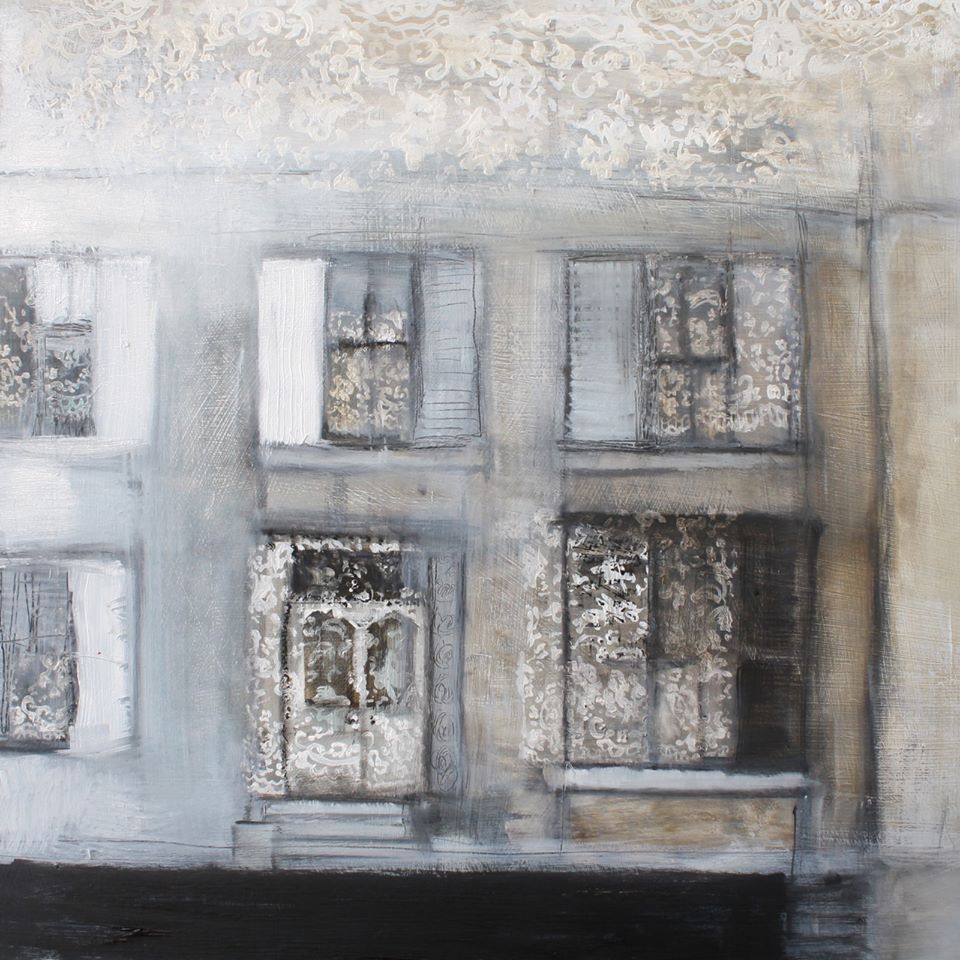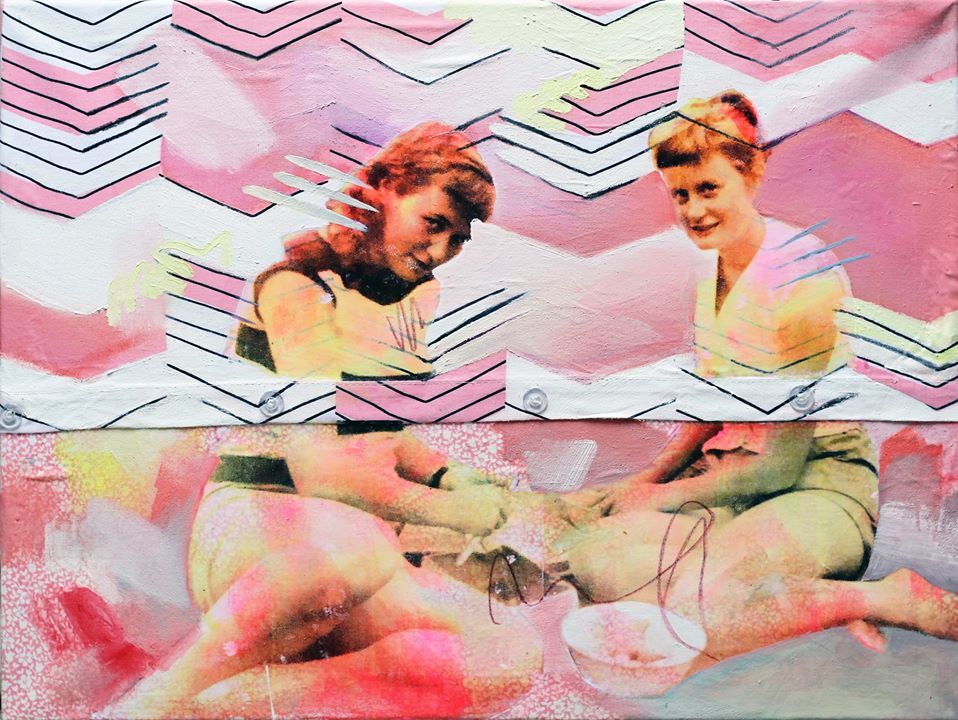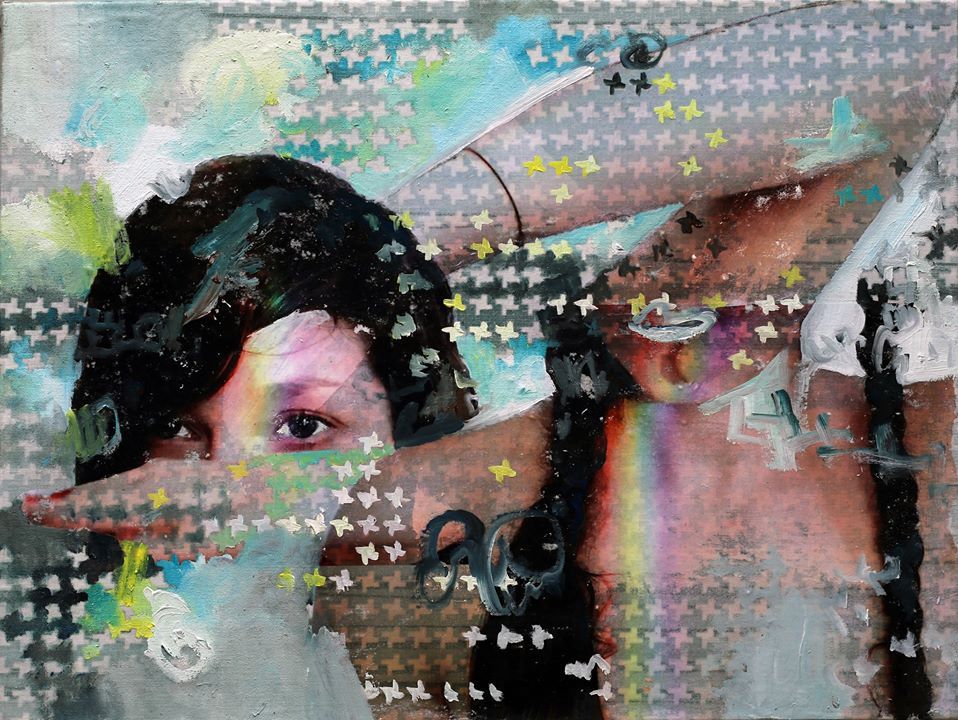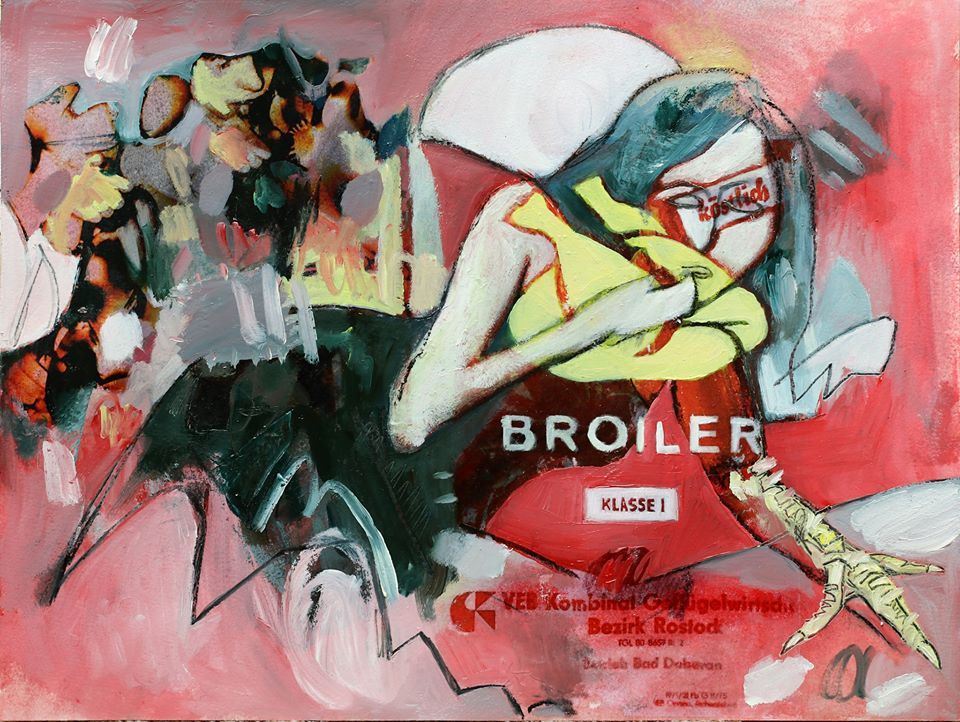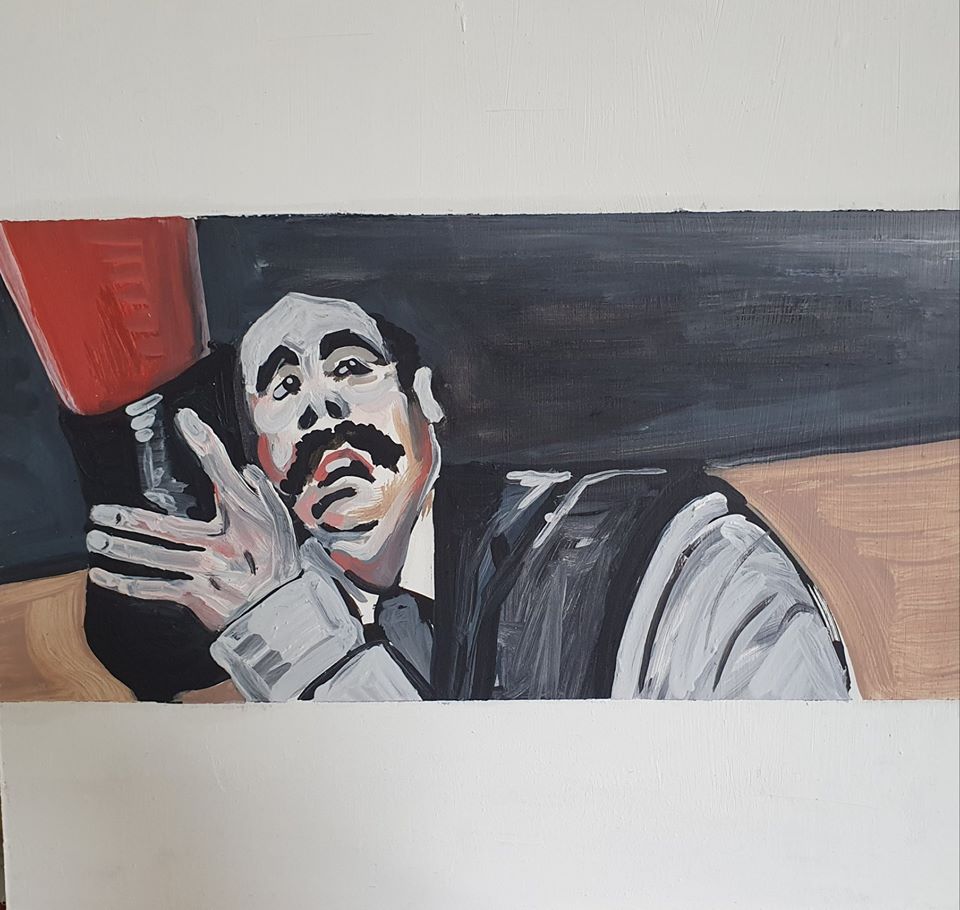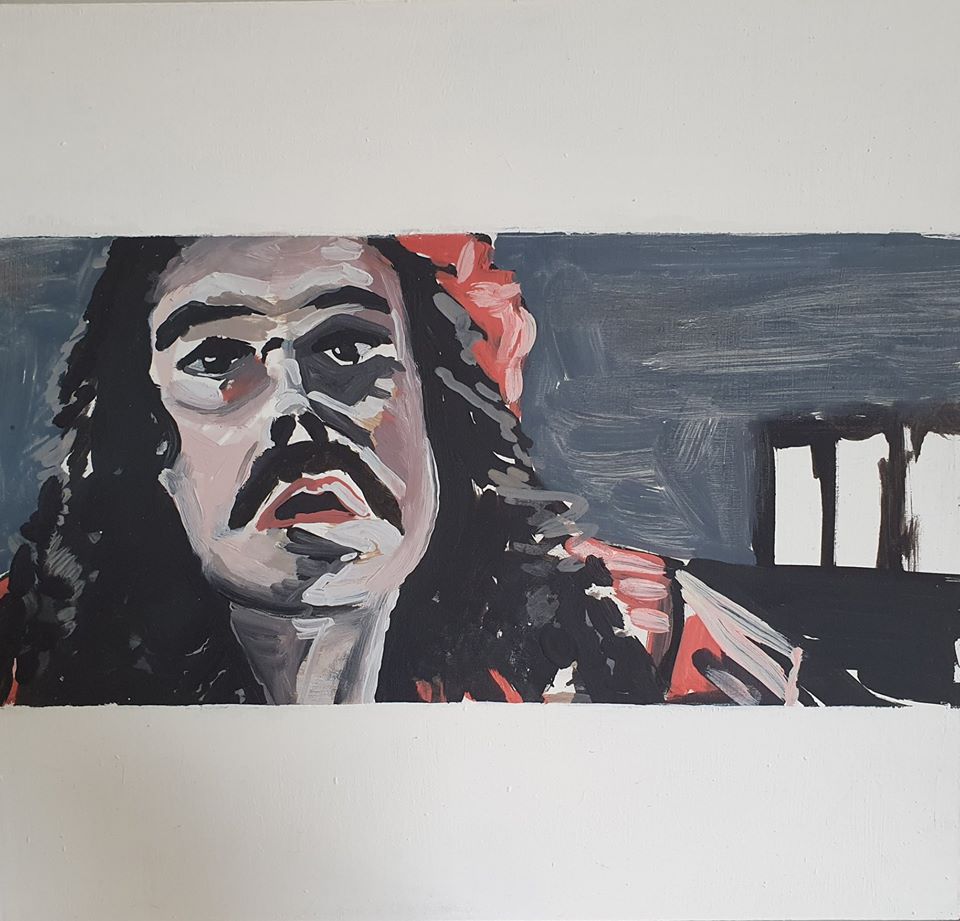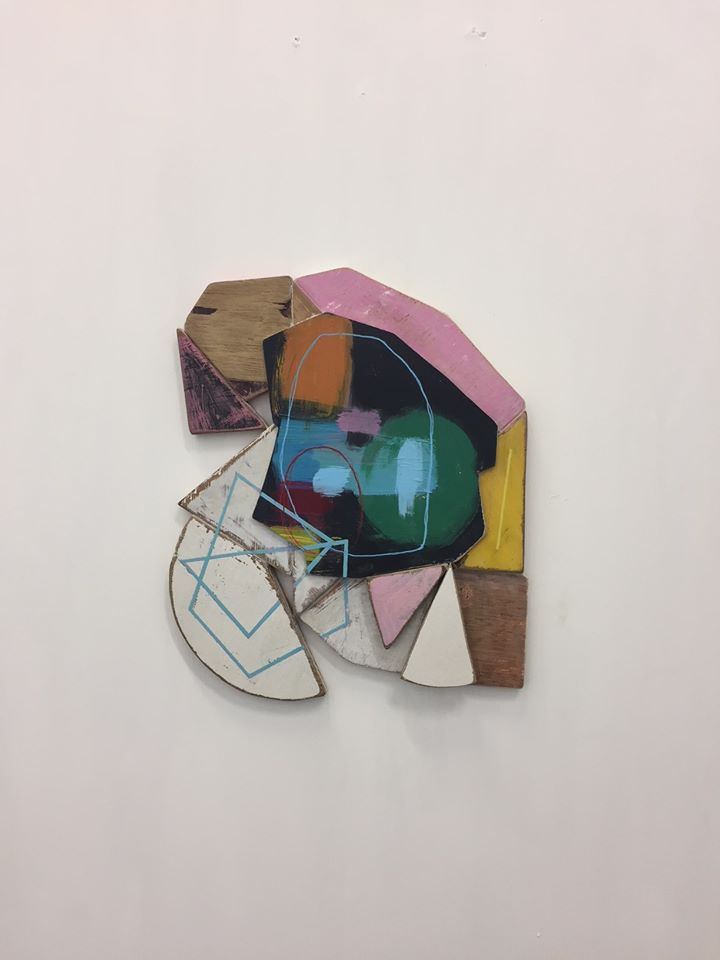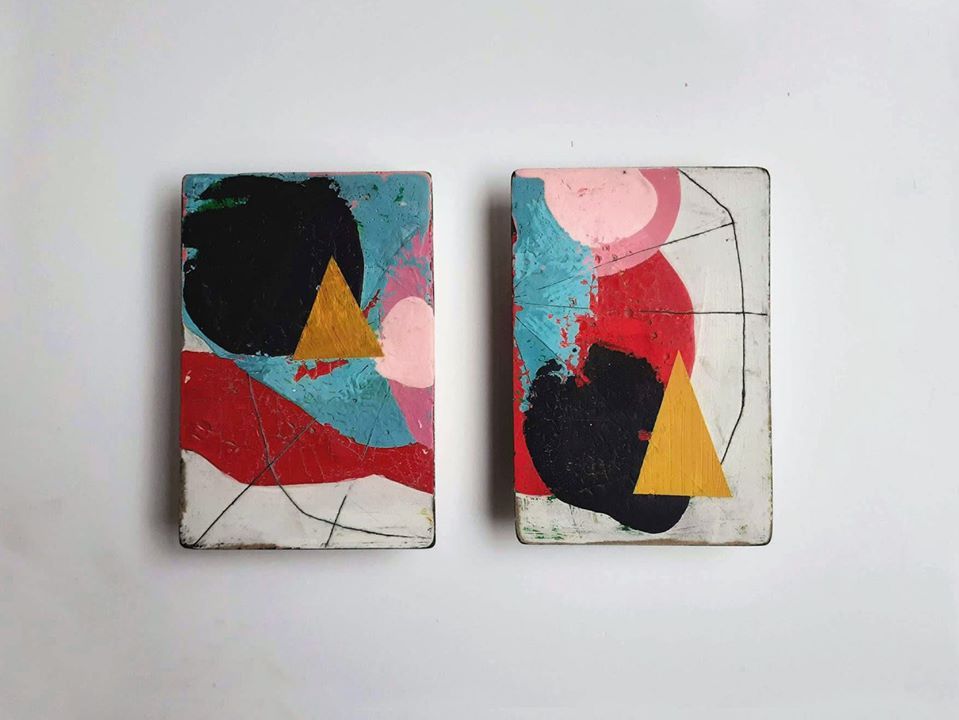The Morphing Feminine, a Bloomsday 2020 group show
16 June - 30 July
Group Show
Artists:
Aisling Conroy, Mary A. Fitzgerald, David Fox, Nickie Hayden, Miriam McConnon, Kelly Ratchford, Vicky Smith
and Susanne Wawra
Initial launch online only: Tuesday 16 June, 7 pm with a live stream event on Facebook (no booking needed, all welcome).
We are delighted to announce that Molly, aka Caitríona Ní Threasaigh, will also join us from her boudoir at the online launch
Availability of the show: Daily at the gallery from 17 June but by appointment only until further notice. Also online in our 3D Virtual Space
(from 16 June onwards)
The Olivier Cornet is delighted to present The Morphing Feminine, a visual artists's response / reaction to -and possibly- re-reading of- various aspects of the feminine in James Joyce 's novel Ulysses and in the author's life. This art exhibition is part of this year's Bloomsday Festival.
This exhibition will run until 30th of July 2020.
We are delighted to announce on this occasion that the gallery will reopen on June 8 (but by appointment only until further notice).
The title of the exhibition is a reference to Dr Caroline Elbay's talk at the James Joyce Centre on 4th November 2019:
“Throwing Shapes: The Morphing Feminine in Joyce”.
Our recently-launch limited-edition relief lino-cut print 'Sylvia'
by Nickie Hayden will also be available at the gallery if there are any copies left!
Artists' notes on their work below:
Mary A Fitzgerald:
My work creates suggestions of place and object, but also incorporates private sensation and experience. When I begin a body of work I gather eclectic images, images from the everyday, daily observations and random things seen and heard, tangled with memory and recall. These momentary and fleeting images, are brought together, transformed and communicated through the process of painting. My work plays with our perceptions of literal and emotional space, revealing the extent to which we can never be certain of what we know, see or feel.
My work creates suggestions of place and object, but also incorporates private sensation and experience. When I begin a body of work I gather eclectic images, images from the everyday, daily observations and random things seen and heard, tangled with memory and recall. These momentary and fleeting images, are brought together, transformed and communicated through the process of painting. My work plays with our perceptions of literal and emotional space, revealing the extent to which we can never be certain of what we know, see or feel.
I have had over many years a ‘pick-up and put-down’ approach to reading Ulysses, but this time, I read some targeted academic papers on the subject and more importantly listened to the audio version. My work is made intuitively, by reacting to what is seen and heard, so like the novel there are all sorts of layers of thought which flow in and out of each other in the making of these paintings. The book suggests to me a porous place between men and women. Similarly tested is the space between reality and hallucination, recall and truth, and the conscious and subconscious mind.
SHE, the title of which holds He and She is a work which emerged over time and went through many layers of changing imagery and scraping back into paint. Playing with the suggestions of things, a horse like figure seemed to emerge. Parallels can be suggested to a Trojan horse, but again I enjoy multiple readings that a viewer brings so inferring too literally about the meaning of a piece can limit that process.
Circe, the sorceress transfers Odysseus’s men into pigs and the painting The work Circe
(also the title of chapter 15 in the novel) is inspired by the morphing of realities in this particular episode where the space between hallucination and the real world meet. The clamour of female voices pepper the episode, dirt, danger and action, with amazing descriptions of place through colour. The painting could read as a portal or gateway between spaces. Night-town
is also an embarking or adventure into this unreal world. Of note also Circe is the name the sorceress who transforms Odysseus’s men into pigs in Homers Odyssey, on which Ulysses is based.
As I re-read the chapters I was struck by the noise of Dublin in the novel, the raucous bawdy life as lived on the streets. My studio is on Talbot street and while making the work during ‘lockdown’ I was thinking about the city in its new state of silence, with Talbot street a stone’s throw away from the location of Night town.
Aisling Conroy:
A Portrait of the Artist as a Young Bean [ban]
(meaning ‘woman’ in Gaelic*)
In referencing James Joyce's alter ego Dedalus, this work reimagines the story according to a woman's perspective (“Bean”[ban] meaning woman in Gaelic).
In Joyce's first novel, A Portrait of the Artist as a Young Man, he traces the religious and intellectual awakening of a male protagonist Stephen Dadelus who is also an important character in Ulysses. Based on the Greek mythological figure, Daedalus was seen as a symbol of wisdom, knowledge and power. In this painting I’ve represented the woman as the icon, the revered in society as opposed to what was in the past a male domain, containing male perspectives and male portraits as it were.
The work is an abstract representation of the female portrait. On one hand we see her fragmented and constrained; commenting on a woman’s place in society and the obstacles she encounters; on the other hand we see strong bold colours; contrasting shapes; light and dark; soft and hard which in all strike as an alternative visual rendition of the woman's chapter to Joyce's Alter Ego, Dedalus - a complex symbol of female wisdom, knowledge and power.
Circe’s Spell: Bloom and Dedalus
This work refers to the chapter Circe in Joyce’s Ulysses. In Greek mythology, Circe was a Sorceress, and represented by the gender shifting Bella Cohen in Ulysses. In this chapter, Bloom and Dedalus face their demons and enter the dark underworld (Nighttown), where they encounter the dominating Bella Cohen (Circe). The diptych is a type of sigil magic, representing female power and energy. Both upright triangles represent the masculine, as well as being a symbol of the occult, referring to Joyce’s own personal interest with the occultism, theosophy; and the study and practice of magic.
Ref: Carver, Craig. “James Joyce and the Theory of Magic.” James Joyce Quarterly, vol. 15, no. 3, 1978, pp. 201–214.
Miriam McConnon:
McConnon’s paintings for ‘The Morphing Feminine’ group show at the Olivier Cornet Gallery, depict scenes from Leopold Bloom’s journey through the streets of Dublin in James Joyce’s Ulysses. These sepia soaked scenes are interrupted with patches of white and black lace. The lace injects a feminine quality to Bloom’s character and hints at the intimacy of women’s lingerie as Bloom’s head is filled with thoughts of his beloved Molly embarking on an imminent affair...
Nickie Hayden:
Lucia, House of Cards
Lucia Joyce is a remarkably interesting character. The photographs of Lucia are iconic, her stance, her look, is of something different. To me she has a fluidity of gender and of species, but also a vulnerability that seems to me to ask the question, ‘is this okay’, ‘do I have permission’. We know she was gifted but was stopped in her tracks by her father who thought her dancing was too much of a strain on her. He also found the conflict in his home between Nora and Lucia too much as he was writing Finnegan’s Wake, so Lucia stopped her intensive lessons. Her special gift was taken from her. This is my interpretation of Lucia and why it is important for me to honour her.
I have made an installation of a house of cards from paper embossed with images of Lucia for the exhibition The Morphing Feminine at The Olivier Cornet Gallery. The cards themselves represent her fragility, but the individual poses represent her strength. Lucia was a wounded flower. Who did the wounding?
David Fox:
Capturing a theatrical or cinematic representation of Bloom obsessing and then 'morphing' into the feminine.
Vicky Smith:
Human Characteristics of an Object
Women’s garments James Joyce seemed to find as exciting as their bodies. ‘Material On The Head’ and ‘My Love Wears Light Attire’ are self-portraits. I wear a kitchen mop head on my head and an old reclaimed bedroom lampshade like a hat or garment. Why do you wear these cursed things? Joyce would ask Nora when she went to bed in her corset. Please take off that breastplate as I do not like embracing a letterbox(1). The wearing of domestic objects is playful. The wearing of a corset was compulsory. Different rules for different times. The objects morph into my head taking over my identity. They inhabit the position of my face. I am living in them it seems. Like Nora’s corset, the domestic sphere restricts the body. The corset was of her time. The domestic is mine. The kitchen mop and the lampshade now an identity in their own right are cursed things. Functional. Forever there.
(1)JJ to NB July 12th 1904 II, 43-44
Click here
to download full statement
Susanne Wawra:
Don’t know my sunbow from my rainbow
The title is a word play, alluding to an experience of reading Ulysses, the density, intertextuality and level of Joyce's experimentation with language. The feminine in this mixed media work is taken apart and montaged, confused, shifted, morphed.
The rainbow is nodding towards the Rainbow girls in Joyce’s work Finnegan's Wake which are said to have been inspired by his daughter Lucia. Lucia means light and rainbows are a symbol of hope in many cultures.
For Ulysses, Joyce developed schemas to help the understanding of his novel, assigning symbols, colours, body parts etc. to its chapters. Rainbow is the colour he has assigned to The Wandering Rocks episode, that consists of several short episodes that mirror the overall structure of the book, a kind of rainbow.
Broiler Klasse I (Chicken Class A)
A woman eating chicken, her one arm a chicken leg. The chicken image is a transfer print from an East German wrapper of a roast chicken, called Broiler.
Food regarding Molly in Ulysses is used as a sign, it reveals a relationship with the outer world, culture and identity. In Penelope: “I wished I could have picked every morsel of that chicken out of my fingers it was so tasty and browned and as tender as anything only for I didn't want to eat everything on my plate”
The chicken-woman is also inspired by an account of a Parisian doctor
who was called because of Joyce’s eye inflammation of the eye. He found Joyce himself and Nora in their chaotic looking hotel apartment squatted over a pan containing the remains of a chicken.
Mandy Mount and Sandy Mount
refers to the incident on Sandymount Beach in which Leopold Bloom watches Gerty MacDowell in the Nausicaa episode. Gerty sits on a rock and leans back to see the fireworks exposing her legs with one knee in her hands - “she revealed all her graceful beautifully shaped legs like that … and he could see her other things too, … , and she let him and she saw that he saw”...
Here, we have two women, who look like sisters from found photographs of Susanne Wawra’s archive of images from the German Democratic Republic. The sisters are peeling potatoes outside in the sunshine, wearing shorts that expose their legs. They look at the camera and so at the viewer directly, like Manet’s Olympia.
Coverage

